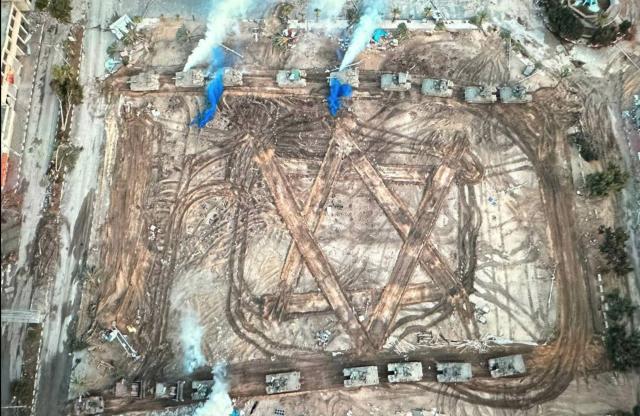The potential hostage deal in the southern Gaza Strip marks a crucial phase in the ongoing campaign, emphasizing the need for a sustained and strategic approach. The deal, which is likely to involve a ceasefire and substantial costs to Israel such as the release of prisoners and perhaps even money for aid, is vital for addressing the persistent terrorist infrastructure in the region. The goal remains clear: the complete dismantlement of all terrorist organizations, not just Hamas operating in southern Gaza and a complete demilitirization of the Strip.
In the aftermath of the Israel Defense Forces' (IDF) significant operations in northern Gaza, the reality on the ground is stark. Nearly two months of intense conflict have affected about 40% of Gaza's territory, reducing much to resemble a scene out of an apocalyptic movie, while over a million residents have been displaced and extensive structural damage has been inflcited. This destruction has deprived the area of essential services and infrastructure, such as electricity, water, and communication, posing a daunting challenge for reconstruction. The destruction, while necessary to eliminate Hamas capabilities which, as the IDF has proven, has been woven into the civilan infrastructure of Gaza, will take a massive effort to rebuild.
The discussions about a temporary ceasefire, primarily aimed at getting hostages returned, underscore the wider strategic goals. With around 60% of the terrorist infrastructure still in need of attention, the IDF anticipates further ground maneuvers which, as with the norhtern strip, will build on the successes of aerial operations. The complexity of the mission is heightened by the presence of Hamas leadership and militants in the southern region, intertwined, as has been their strategy for years, with the civilian population, including some foreign captives and the Israeli abductees from the October 7th attacks.
'We've had bad experiences after we agreed to ceasefires... A very important lesson is to continue putting military pressure on the terror organizations,'
— i24NEWS English (@i24NEWS_EN) November 20, 2023
Maj. Gen. (res.) Uzi Dayan talks about IDF's possible disadvantages if Israel agrees to a temporary ceasefire pic.twitter.com/uY4tzhS3hW
To address the displacement crisis, the establishment of refugee camps in the less affected coastal areas of northern Gaza is being considered. This solution, however, raises questions about international aid and the willingness of residents to return to an area littered with destruction and hazards. However, as the Allies forced German civilians to march thorugh the concentration camps to see for themselves the extent to which their leaders established a machine of death, some argue that forcing Gaza residents to do the same, seeing the extent of the tunnel network and its remains, will help deter future indoctrination into terror support by the population.
The upcoming operations in the southern Gaza Strip are expected to be more complex, especially given the presence of refugees. Nevertheless, the imperative to eliminate the remaining terrorist infrastructure is paramount. This effort aims to ensure the downfall of terrorist groups, along with the capture or neutralization of their leaders.
Show this to anyone who calls for a cease fire, talks about “resistance” or wants to put Oct 7 “in context.”
— Gregg Mashberg (@gregg_mashberg) November 14, 2023
Oct 7 was a rape fest, a torture fest, “torturing a pregnant woman, “rape as genocide.”
Hundreds of thousands in the streets of London and NY celebrating this. https://t.co/1WEtNmGSWb
In the coming days, significant and potentially unpopular decisions await the government. The anticipated hostage release deal, involving a ceasefire will no-doubt face public scrutiny and discontent - perhaps even with the governing coalition. Despite this, it represents a vital step towards reuniting families with their loved ones, a testament to the public's resilience and patience, which have been critical in this conflict. There is also the need for closure, as it is known that some of the hostages are dead, this will allow their families to bury their loved ones - and heal those who survived who most certainly will have deep trauma.


